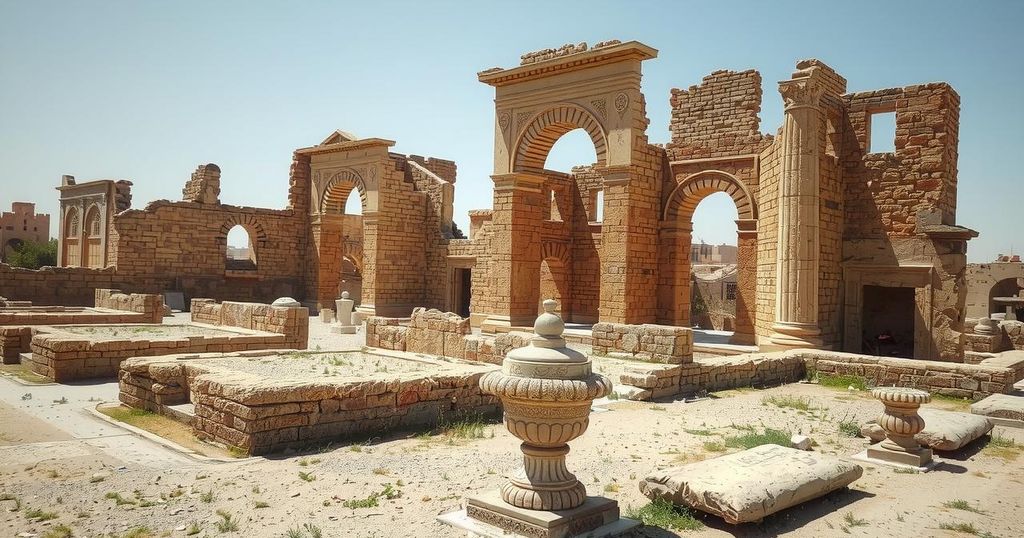Daraa, southwestern Syria’s chief town in the Ḥawrān region, is known as “the cradle of the revolution” for its role in the 2011 anti-government protests that led to the Syrian Civil War. It is situated near the Jordanian border and serves as a market and garrison town, with significant ancient ruins. Daraa is a key agricultural hub, particularly in grain production, and its population was approximately 97,969 in 2004.
Daraa, located in southwestern Syria, is recognized as the principal town of the Ḥawrān region and has earned the moniker “the cradle of the revolution” due to its pivotal role in the 2011 protests against President Bashar al-Assad’s administration. Situated less than six miles from the Jordanian border, Daraa functions as a crucial roadway and rail junction connecting Amman and Damascus. Despite lacking local industries, it serves as a marketplace and a garrison town, housing significant ancient ruins and a mosque built in 1253.
Historically, Daraa is significant for its ancient history, including remnants from the Greco-Roman era and as the site of the decisive Battle of the Yarmouk River in 636. This battle saw the collapse of Byzantine forces following the Arab conquest of Syria, marking a pivotal moment in regional history. During World War I, Daraa also witnessed significant military engagements.
The unrest began on March 6, 2011, when local youths were arrested for expressing pro-democracy sentiments through graffiti that echoed the Arab Spring uprising slogan, “The people want the fall of the regime.” This incident incited widespread protests against the government’s oppressive tactics. Violence spread throughout the country, escalating into the protracted Syrian Civil War, which saw Daraa under government control by 2020 but reignited in late 2024. On December 7, 2024, the dominant rebel group, Hayʾat Tahrir al-Sham, regained control of Daraa amidst renewed conflict.
Agriculturally, Daraa is the center of a fertile grain-producing region, particularly notable for wheat and barley cultivation. In the latter part of the 20th century, the Syrian government initiated various programs to boost agricultural productivity, implementing advanced farming techniques and clearing land hindered by lava rock formations. According to census data, the population of Daraa was 97,969 in 2004, reflecting its status as a key urban center in the region.
Daraa has deep historical roots, featuring ancient ruins and a significant battle site from the early Islamic conquests. Its strategic location has made it a vital junction for trade and transportation in southern Syria, linking it to neighboring Jordan. The city gained international attention during the Arab Spring by becoming the epicenter of protests against the Syrian government, laying the foundation for a wider conflict that manifested as the Syrian Civil War. This uprising reflected widespread discontent with governmental policies and prompted a violent crackdown, leading to lasting repercussions for the region.
In summary, Daraa plays a crucial historical and contemporary role in Syria, marked by its extensive agricultural activity and its notorious reputation as a catalyst for the Syrian Civil War. The town’s ongoing struggles reflect the broader complexities of Syria’s socio-political landscape, alongside its rich cultural heritage and ancient history. The challenges faced by Daraa underscore the enduring impacts of conflict and the aspirations of its people for political change and stability.
Original Source: www.britannica.com






